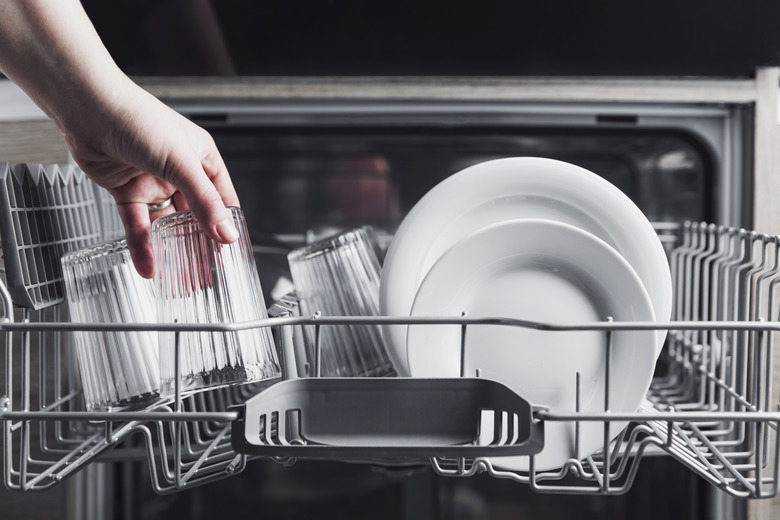How To Use Clorox Or Bleach In Dishwashers
We may receive a commission on purchases made from links.
Your dishwasher works hard for you, and every now and then it needs a little love. Keeping your dishwasher clean and disinfected will help it get your dishes cleaner and prevent the funky smell a dirty dishwasher can develop in the summer. The cleaning process is quick and easy, but there are a few things to note before you begin so you don't accidentally damage your appliance.
Dishwasher Cleaning Basics
Dishwasher Cleaning Basics
Experts recommend deep cleaning your dishwasher about once a month. If you don't use it often, you may be able to extend that to six months between cleanings but wash it as soon as you can if it starts to get stinky or perform poorly. When using bleach to disinfect the appliance, use it alone. Don't add vinegar, baking soda, or other cleansers into the mix.
Bleach makes an excellent disinfectant for cleaning your dishwasher but only if its parts are plastic. Bleach can damage stainless steel interiors and parts, so don't use bleach if you find any stainless steel pieces inside your dishwasher. You'll usually find plastic parts in older dishwashers and less expensive units. If you find stainless steel, the cleaning process is the same but use vinegar instead of bleach.
Things Needed
-
Dish soap
-
Bowl
-
Bleach, 1 cup
How to Use Bleach in a Dishwasher
1. Clean the Racks and Remove Debris
Before you begin disinfecting your dishwasher, you'll want to remove any visible or stuck-on food debris. You may find food particles lying in the bottom of the dishwasher or stuck on the racks, and you'll want to get rid of it.
- Empty the dishwasher.
- Remove any racks that you can and rinse them in the sink. If you notice food dried or otherwise stuck on the racks that won't rinse away, soak them in warm water and 2 cups of vinegar for about 20 minutes.
- Look for food particles inside the dishwasher with the racks out. Remove any that you see. Leaving the racks out while you do so makes it easier to reach into the dishwasher.
- Remove your dishwasher filter and wash it out with warm, soapy water. Most filters twist out, but your dishwasher's instruction manual will detail the specifics of your machine.
- Give the filter and racks a final rinse and reinstall them.
2. Clean the Door Gasket
The rubber gasket around your dishwasher door is crucial to ensuring that your dishwasher doesn't leak. Unfortunately, it can start to sprout mold and mildew that can make an otherwise clean dishwasher start to smell. Cleaning this gasket is an important step to remember when doing a dishwasher deep clean.
- Combine 3 cups of hot water with 1/2 cup of white vinegar.
- Scrub the interior door gasket gently with a soft-bristled toothbrush.
- Check the manufacturer's instructions if the door gasket still looks grimy. You may be able to use an all-purpose cleaner to wash the gasket more thoroughly but only if the manual says it's safe to do so.
3. Deep Clean the Dishwasher Interior
Now that you've gotten rid of any food particles and nasty gasket debris, it's time to deep clean and disinfect the appliance. Bleach is an excellent way to do this but remember that it's only safe on plastic. Substitute vinegar if you're cleaning stainless steel.
- Fill a dishwasher-safe bowl with 1 cup of bleach.
- Place the bowl on the top rack of the dishwasher.
- Run the dishwasher. A short cycle is fine but use the hottest water setting you can and skip the dry cycle. Let the dishwasher air-dry when it's finished. Propping the door open a bit will help it dry faster.
